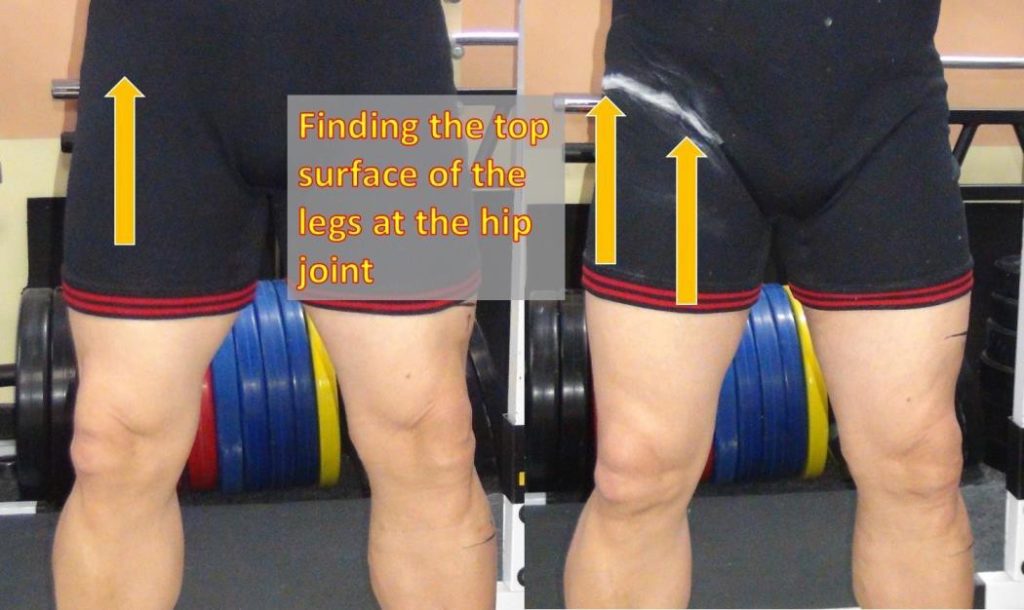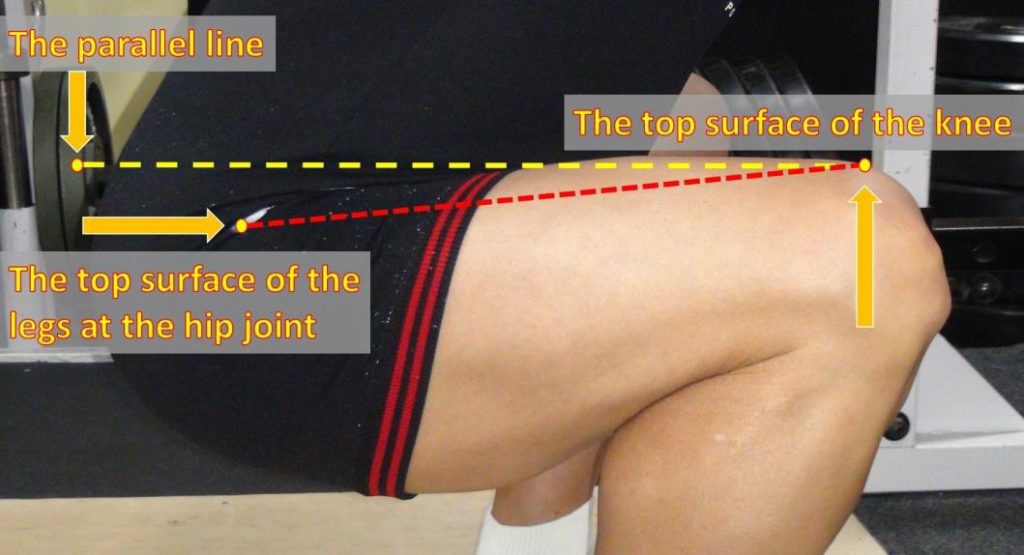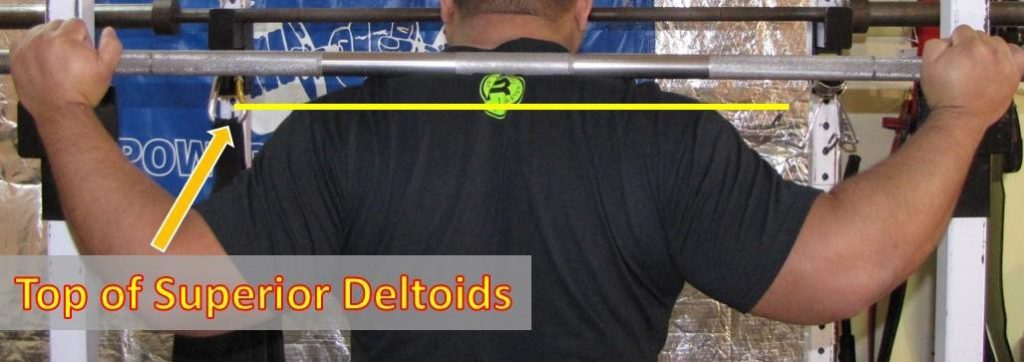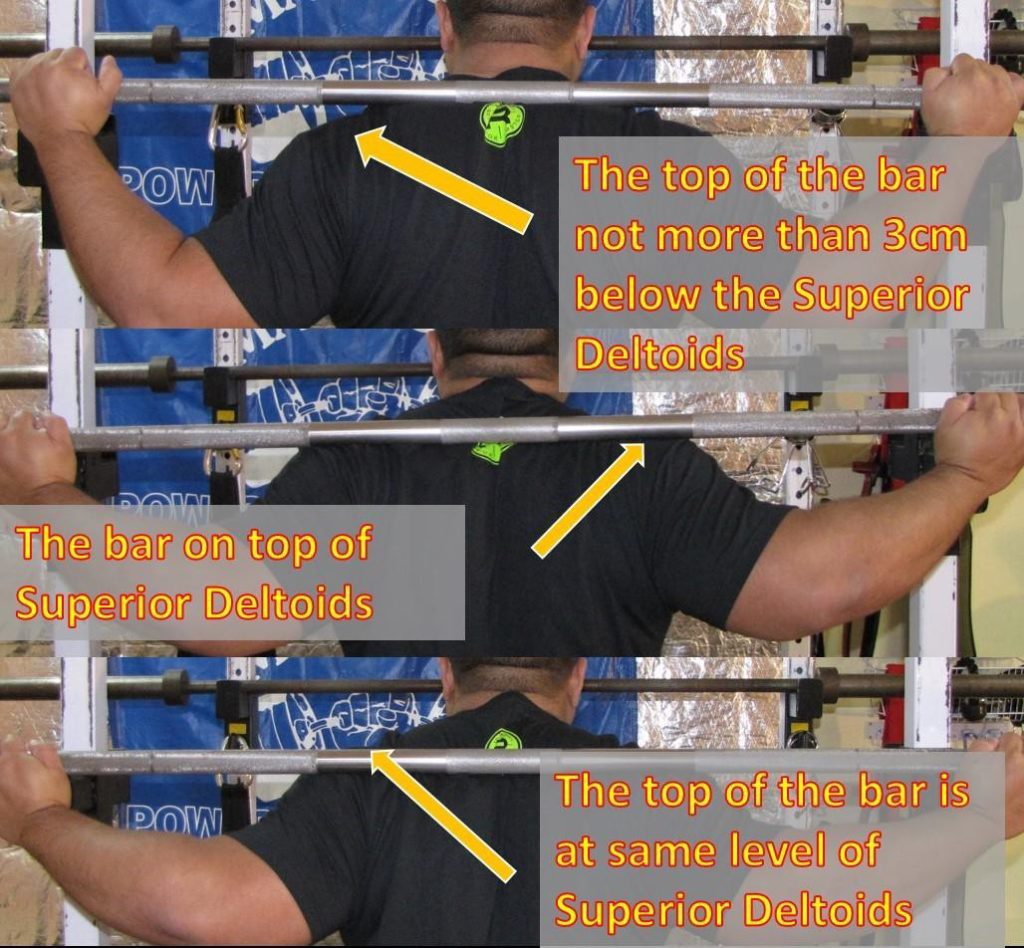This document is a digital representation of the official IPL Rulebook. This document has been digitized to permit automatic translation of this document. This document is provided as a reference. In ALL instances, please refer to the official IPL Rulebook, which can be found here: Official IPL Rulebook.
Part 4. POWERLIFTS AND RULES OF PERFORMANCE
Item 1. Squat
4.1.1 The lifter shall face the front of the platform.
4.1.2 Not more than five and not less than three spotters/loaders shall be on the platform at any time. A lifter may not use their own personal back spotter; they must use the same official meet spotters provided for all other lifters. (See exception 6.2.38)
4.1.3 The lifter may enlist the help of the spotter/loaders in removing the bar from the racks; however, once the bar has cleared the racks, the spotters/loaders shall not assist the lifter further with regard to proper positioning, foot placement, bar positioning, etc.
4.1.4 The lifter shall not hold the collars, sleeves or discs at any time during the performance of the lift. However, the edge of the hands gripping the bar may be in contact with the inner surface of the sleeves. After removing the bar from the squat racks or the mono-lift, the lifter must move backwards by taking one or more steps to establish the proper starting position. The lifter shall assume an upright position with the top of the bar not more than 3cm below the posterior deltoid. The bar shall be held horizontally across the shoulders with the hands and fingers gripping the bar and the feet flat on the platform with the knees locked. Note: If a mono-lift is used, the swing arm lever pin cannot be removed, or the swing arm lever actuated. The lifter must still un-rack the weight and move backwards to establish his position (see exception 2.4.4).
4.1.5 The lifter shall wait in this position for the Head Referee’s signal. The signal shall be given as soon as the lifter is motionless with knees locked and the bar properly positioned. The Head Referee’s signal shall consist of a downward movement of the arm and the audible command “SQUAT”.
4.1.6 Upon receiving the head Referee’s signal, the lifter must bend the knees and lower the body until the top surface of the legs at the hip joint is lower than the top of the knees.
4.1.7 The lifter must recover at will without double bouncing or any downward movement to an upright position with the knees locked. When the lifter is motionless, the Head Referee will give the signal to replace the bar.
4.1.8 The signal to replace the bar will consist of a backward motion of the hand and the audible command “RACK”. The lifter must then make a bona fide attempt to return the bar to the racks.
4.1.9 For reasons of safety the lifter will be requested to “Re-Place” the bar, together with a backward motion of the arm, if after five seconds they are not in the correct position to begin the lift.
4.1.10 The correct bar for each lift shall be used in all competitions. Meet Directors have the option of using either a 20 kg power bar or 25 kg squat bar during any squat flight and should notify all lifters well before the meet which bar will be used. During the bench press only a 20 kg power bar must be used. During the deadlift, only a deadlift specific 20 kg bar must be used.
The diagrams below indicate legal depth in the squat and legal bar position:
 |
 |
 |
 |
Item 2. Causes for Disqualification of a Squat:
4.2.1 Failure to observe the Head Referee’s signals at the commencement or completion of a lift.
4.2.2 Double bouncing or more than one descending or ascending motion throughout the lift.
4.2.3 Failure to assume an upright position with the knees locked at the commencement and completion of the lift.
4.2.4 Any shifting of the feet laterally, backwards or forwards, during the performance of the lift.
4.2.5 Failure to bend the knees and lower the body until the top surface of the legs at the hip joint is lower than the top of the knees.
4.2.6 Changing the position of the bar across the shoulders after the commencement of the lift.
4.2.7 Contact with the bar by the spotter/loaders between the referee’s signals.
4.2.8 Contact of elbows or upper arms with the legs, slight contact is permitted if there is no supporting that might aid the lifter.
4.2.9 Failure to make a bona fide attempt to return the bar to the racks.
4.2.10 Any dropping or dumping of the bar after completion of the lift.
4.2.11 Failure to comply with any of the requirements contained in the general description of the lift, which precedes this list of disqualifications.
4.2.12 If a mono-lift is used and the swing arm lever actuated, and/or the lifter does not move backwards to establish his position (see exception 2.4.4)
4.2.13 Failing to remove the bar from the racks before the one-minute clock expires.
4.2.14 Deliberate or intentional contact between the bar and the bar-rest supports during the lift. However, unintentional contact that did not assist the lifter is not reason to turn down the lift.
4.2.15 If a lifter inadvertently steps in any direction after the completion of the lift, and after the rack command has been given, it is not reason to red light the lift.
4.2.16 There are several movements to be considered (breath before squat, unhinging hips before the squat, lowering or raising the bar while the knees are still locked and unlocking and relocking the knees):
A. The lifter is ready to squat and gets the “SQUAT” command but has not yet unlocked their knees to start the descent. The lifter takes a big breath to fill the lungs. This may cause a slight upward and downward movement of the bar on the shoulders. This slight movement is not considered to be a violation.
B. The lifter is ready to squat and gets the “SQUAT” command. While in the erect position with knees still locked, the lifter unhinges the hips to align the back prior to making the descent. This slight hip movement and possibly some slight bar movement is not to be considered a violation.
C. The lifter is ready to squat and gets the “SQUAT” command. While the knees are still in a locked position, the lifter bends at the waist or changes the erect body position which results in the lowering or raising of the bar. This deliberate or intentional movement of the body and bar is to be considered a violation.
D. The lifter is ready to squat and get the “SQUAT” command. The lifter unlocks their knees and then relocks the knees prior to unlocking the knees to commence the descent in the squat. This is to be considered a violation.
Item 3. Bench Press:
4.3.1 The head of the bench must be placed on the platform facing the Head Referee.
4.3.2 The lifter must lie on his back with shoulders and buttocks in contact with the flat bench surface. This position must be maintained throughout the lift. The head may remain flat or rise during the lift. The lifter has the option of benching while either flat footed, or on the toes, as long as the foot remains in contact with the lifting platform. The feet may move up and down during the lift and come in contact with each other as long as they do not come in contact with the equipment.
4.3.3 The hands may grip the bar with a “thumbs around” grip, “thumb less” grip, or “reverse” grip. They may not grip outside the 81cm mark. Index fingers’ covering the 81 cm ring is allowed. If a
lifter must use an offset or unequal grip, whereby one hand is placed outside the marking, it is the lifters responsibility to explain to the head referee and allow inspection of the intended grip prior to making the attempt. The maximum distance between the lifters index fingers using an offset grip may never exceed 81 cm, same as a conventional lifter.
4.3.4 To achieve firm footing the lifter may use flat surfaced plates or blocks not exceeding 30 cm in total height, or 45 cm length x 45 cm width, to build up the surface of the platform.
4.3.5 Not more than four, and not less than two spotter / loaders shall assist the lifter on the platform. The lifter may enlist the help of the spotter / loaders in removing the bar from the racks. The lift off must be to arm’s length. At no time may the lifter bring in their own personal side spotters, only official meet side spotters provided can be used (See exception 6.2.38). They may however use their own center spotter.
4.3.6 If a center spotter is used, they must move off the platform and to one side after the handoff prior to the commencement of the lift. For safety reasons they will be allowed to stay in close proximity (but not blocking the referees view) for any emergencies.
4.3.7 After removing the bar from the racks or receiving it from the spotter / loaders, the lifter shall show full lock-out of both elbows, along with complete control prior to the “START” command being given.
4.3.8 For reasons of safety, the lifter will be requested to “Re-Place” the bar, together with a backward motion of the arm, if after five seconds they are not in the correct position to begin the lift.
4.3.9 Once the lift has begun, the lifter must lower the bar and hold it motionless on the chest or abdominal area with a definite and visible pause. At no time may the bar come in contact with the lifters belt. For multi-ply bench requirements, refer to section 10.5.2.
4.3.10 Once the bar is paused and motionless on the chest or abdominal area, the audible command “PRESS” will be given. The bar must be pressed upwards with elbows fully locked. Any pronounced or exaggerated uneven lockout of the bar is not allowed. Note: If a lifter has any physical abnormality, handicap or incapacity of extending their arm or arms to arm’s length with elbows fully locked, they must inform and show physical, visual proof to the Head Referee prior to the start of their lift.
4.3.11 When the bar is held motionless in this position the audible command “RACK” is given. The spotters / loaders may assist the lifter in returning the bar to the rack.
Item 4. Causes for Disqualification of a Bench Press
4.4.1 Failure to observe any of the Head Referee’s signals for the lift.
4.4.2 Any change in the elected lifting position during the lift, other than the head (i.e. any raising movement of the shoulders or buttocks from their original points of contact with the bench, or lateral movement of the hands on the bar after the “START” command has been given.) Feet must remain in contact with the floor, however, incidental movement as much as half the length and half the width of the lifters foot is permitted.
4.4.3 Heaving, bouncing, or sinking the bar after it has been motionless on the chest or abdominal area, and the “PRESS” command has been given.
4.4.4 Any pronounced uneven lockout of the arms during the execution of the lift.
4.4.5 Any downward movement of the bar in the course of being pressed out.
4.4.6 Failure to press the bar to full extension of the arms at the completion of the lift.
4.4.7 Intentional contact with the bar by spotter / loaders between the Head Referee’s signals.
4.4.8 Any contact of the lifter’s feet with the bench or its supports.
4.4.9 Deliberate or intentional contact between the bar and the bar-rest supports during the lift. However, unintentional contact that did not assist the lifter is not reason to turn down the lift.
4.4.10 The bar coming in contact with the lifting belt.
4.4.11 Failure to comply with any of the requirements contained in the general description of the lift, which precedes this list of disqualifications.
4.4.12 If a lifter wears the buckle of their belt on his back during the bench presses.
4.4.13 Failure to achieve the proper start position under control, with both elbows fully locked out prior to the “Start” command being given.
4.4.14 Receiving assistance (e.g. adjusting the shirt, belt, wraps, body position, etc.) from any person that has either stepped on the platform, or leaned in, before or during the performance of the lift. (see exception 6.3.2)
4.4.15 Failing to remove the bar from the racks before the one-minute clock expires.
4.4.16 Double bouncing or more than one descending or ascending motion throughout the lift.
Item 5. Deadlift
4.5.1 The lifter shall face the front of the platform.
4.5.2 The lifter has one attempt to complete the lift. Any rising of the bar to the point where all the plates come off the floor on either or both sides will be considered a bona fide attempt.
4.5.3 The bar must be laid horizontally in front of the lifter’s feet, gripped with an optional grip in both hands. The lifter can start the lift at any time before the one-minute clock expires. Once started, it must be lifted without any downward movement until the lifter is standing erect. The bar may come to a stop, but no portion may reverse direction at any time.
4.5.4 On completion of the lift, the knees, hips, and shoulders shall be locked in a straight position and the lifter is standing erect.
4.5.5 The Head Referee’s signal shall consist of a downward movement of the hand and the audible command “DOWN”. The signal will not be given until the bar is held motionless and the lifter is in the finished position.
4.5.6 The lifter will return the bar to the platform with both hands and under control.
Item 6. Causes for Disqualification of a Deadlift
4.6.1 Any downward movement of the bar before it reaches the final position, prior to the “Down” command.
4.6.2 Failure to stand erect with the hips fully locked forward, and the shoulders in an upright, erect and locked position.
4.6.3 Failure to lock the knees straight at the completion of the lift.
4.6.4 Supporting the bar on the thighs during the performance of the lift. See diagram below.
4.6.5 Upward and downward “jerking” of the bar commonly known as “hitching”.
4.6.6 Stepping backward, forward or lateral movement of the foot, although rocking the foot between ball and heel is permitted.
4.6.7 Lowering the bar before receiving the Head Referee’s signal.
4.6.8 After the down command, the bar must be returned to the platform with both hands on the bar without any force or propelling of the bar downward.
4.6.9 Failure to comply with any of the requirements contained in the general description of the lift, which precedes this list of disqualifications.
4.6.10 Should the bar settle as the lifter’s shoulders come back (slight downward motion) should not be reason to disqualify the lift.
4.6.11 Failing to begin the lift prior to the one-minute time clock expiring. The lift will officially begin when the lifter makes a determined or deliberate attempt to raise the bar.
4.6.12 Shaking of the body under maximum exertion during the deadlift is not necessarily a cause for disqualification.


